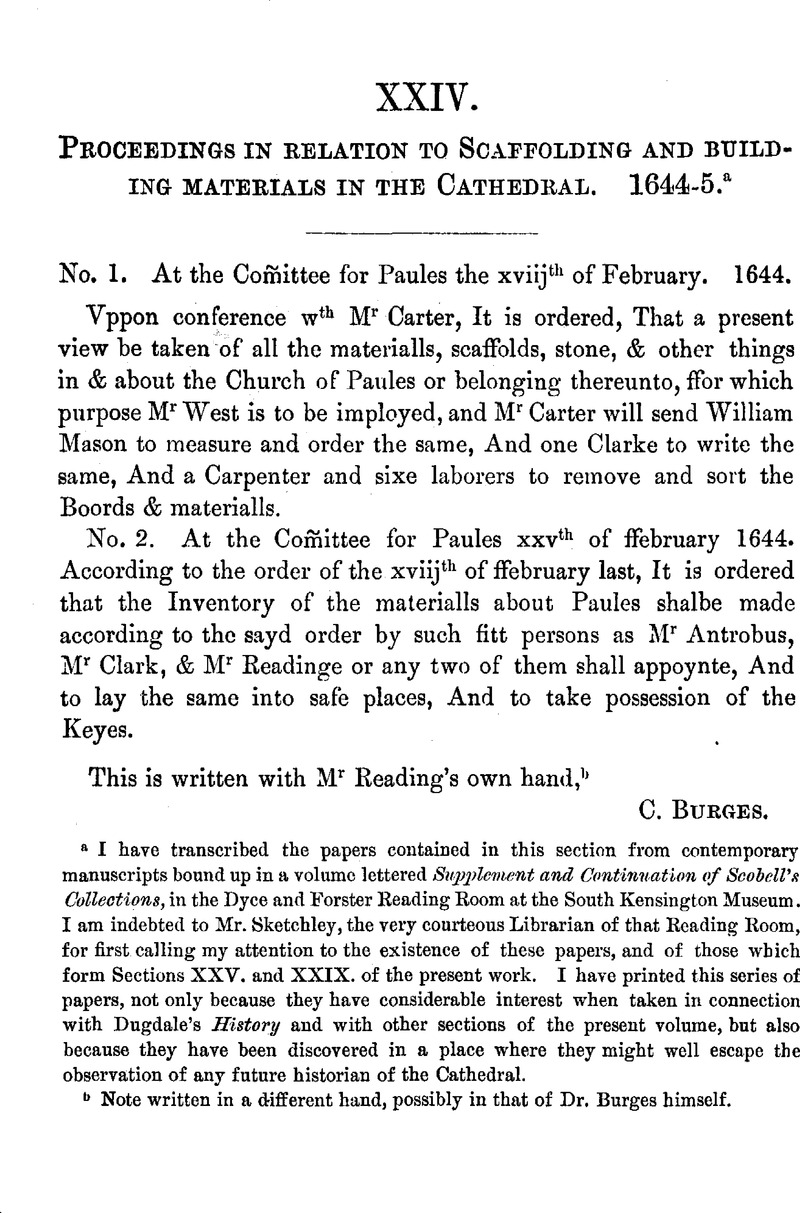No CrossRef data available.
Article contents
XXIV. Proceedings in relation to Scaffolding and building materials in the Cathedral. 1644–5.a
Published online by Cambridge University Press: 24 December 2009
Abstract

- Type
- Documents
- Information
- Camden New Series , Volume 26: Documents Illustrating the History of S. Paul's Cathedral , March 1881 , pp. 142 - 145
- Copyright
- Copyright © Royal Historical Society 1881
References
page 142 note a I have transcribed the papers contained in this section from contemporary manuscripts bound up in a volume lettered Supplement and Continuation of Scobell's Collections, in the Dyce and Forster Reading Room at the South Kensington Museum. I am indebted to Mr. Sketchley, the very courteous Librarian of that Reading Room, for first calling my attention to the existence of these papers, and of those which form Sections XXV. and XXIX. of the present work. I have printed this series of papers, not only because they have considerable interest when taken in connection with Dugdale's History and with other sections of the present volume, but also because they have been discovered in a place where they might well escape the observation of any future historian of the Cathedral.
page 142 note b Note written in a different hand, possibly in that of Dr. Burges himself.
page 143 note a Shiver. A. small slice or slip: the wheel of a pulley. (Halliwell.) The word shive occurs in Shakespeare, Titus Andron. ii. 1:
What, man! more water glideth by the mill
Than wots the miller of; and easy it is
Of a cut loaf to steal a shive we know.
The passage is quoted by Nares.
page 143 note b Probably jack-saws or hand-saws.
page 143 note c Capstans.
page 143 note d Drug, a timber carriage. (Halliwell.) Bed, probably the frame of the timber carriage.
page 143 note e Baltes, probably belts for fastening round scaffold poles.
page 144 note a Stone from Reigate.
page 144 note b Stone from Dinant in Belgium.
page 144 note c It has been suggested that these are struts to give a counterthrust.
page 144 note d This paper is not dated, but from its position in the volume in which it is preserved, and from the internal evidence derived from it and from the papers with which it is associated, I have little hesitation in assigning it to the same period as the preceding inventory.
page 144 note e Gynns, i.e. Engines
page 145 note a Dradle, so written, probably Cradle may be intended.
page 145 note b Cleats, “pieces of wood to fasten any ropes with, or fasten anything to. A piece of wood fastened on the yard arm of a ship, to keep the ropes from sliding off the yard.” Bailey.


